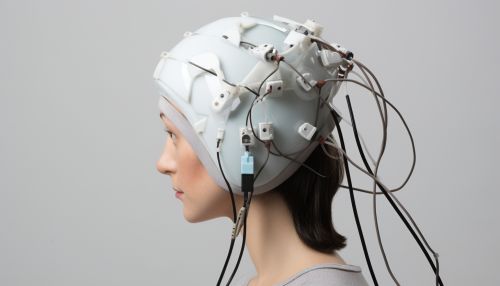Advances in Non-Invasive Brain-Computer Interfaces
Introduction
Brain-computer interfaces (BCIs) are systems that provide direct communication between the brain and an external device. Traditionally, BCIs have been invasive, requiring surgical implantation of electrodes into the brain. However, recent advances have led to the development of non-invasive BCIs, which are able to record and interpret brain activity without the need for surgery. This article will explore these advances, focusing on the technologies and methodologies that have made non-invasive BCIs possible, as well as their applications and potential future developments.
Non-Invasive Brain-Computer Interface Technologies
Non-invasive BCIs primarily use electroencephalography (EEG) to record electrical activity of the brain. EEG involves placing electrodes on the scalp to detect changes in voltage caused by the brain's electrical activity. Other non-invasive technologies include functional magnetic resonance imaging (fMRI), magnetoencephalography (MEG), and near-infrared spectroscopy (NIRS), which measure changes in blood flow or magnetic fields associated with brain activity.


Electroencephalography (EEG)
EEG is the most commonly used technology in non-invasive BCIs due to its high temporal resolution and relatively low cost. However, it has a low spatial resolution and is susceptible to artifacts from muscle activity or eye movements. Recent advances in EEG technology include the development of dry electrodes, which do not require the application of a conductive gel, and wireless EEG systems, which allow for greater mobility.
Functional Magnetic Resonance Imaging (fMRI)
fMRI is a non-invasive technology that measures brain activity by detecting changes in blood flow. It has a high spatial resolution, allowing for detailed imaging of brain structures, but a low temporal resolution. fMRI is typically used in research settings due to its high cost and the need for the subject to remain still during scanning.
Magnetoencephalography (MEG)
MEG is a non-invasive technology that measures the magnetic fields produced by electrical activity in the brain. It has both high spatial and temporal resolution, but is expensive and requires a shielded room to block out external magnetic fields.
Near-Infrared Spectroscopy (NIRS)
NIRS is a non-invasive technology that measures changes in blood oxygenation in the brain. It has a lower spatial resolution than fMRI, but is more portable and less expensive, making it suitable for use in real-world settings.
Signal Processing and Machine Learning in Non-Invasive BCIs
The signals recorded by non-invasive BCI technologies must be processed and interpreted in order to control an external device. This involves several steps, including preprocessing to remove artifacts, feature extraction to identify patterns in the data, and classification to translate these patterns into commands.
Preprocessing
Preprocessing involves cleaning the recorded signals to remove noise and artifacts. This can be achieved through a variety of methods, such as filtering to remove frequencies not associated with brain activity, or independent component analysis (ICA) to separate the signal into independent sources.
Feature Extraction
Feature extraction involves identifying patterns in the preprocessed signals that are associated with different mental states. These features can be time-domain features, which describe the shape of the signal over time, or frequency-domain features, which describe the signal's frequency content.
Classification
Classification involves translating the extracted features into commands for the external device. This is typically achieved using machine learning algorithms, which are trained to recognize patterns in the features and associate them with specific commands.
Applications of Non-Invasive BCIs
Non-invasive BCIs have a wide range of applications, from medical and rehabilitation uses to gaming and entertainment.
Medical and Rehabilitation
Non-invasive BCIs have been used to help people with severe physical disabilities, such as those caused by ALS or spinal cord injuries, to communicate or control assistive devices. They have also been used in neurorehabilitation, for example to help stroke patients regain motor function.
Gaming and Entertainment
Non-invasive BCIs have been used in the gaming industry to create games that are controlled by the player's brain activity. They have also been used in the field of neurofeedback, where individuals can learn to control their own brain activity for purposes such as relaxation or focus.
Future Developments
The field of non-invasive BCIs is rapidly evolving, with ongoing research aimed at improving the accuracy and reliability of these systems, as well as expanding their applications. Future developments may include the integration of non-invasive BCIs with other technologies, such as virtual reality, and the development of hybrid BCIs that combine multiple non-invasive technologies for improved performance.
